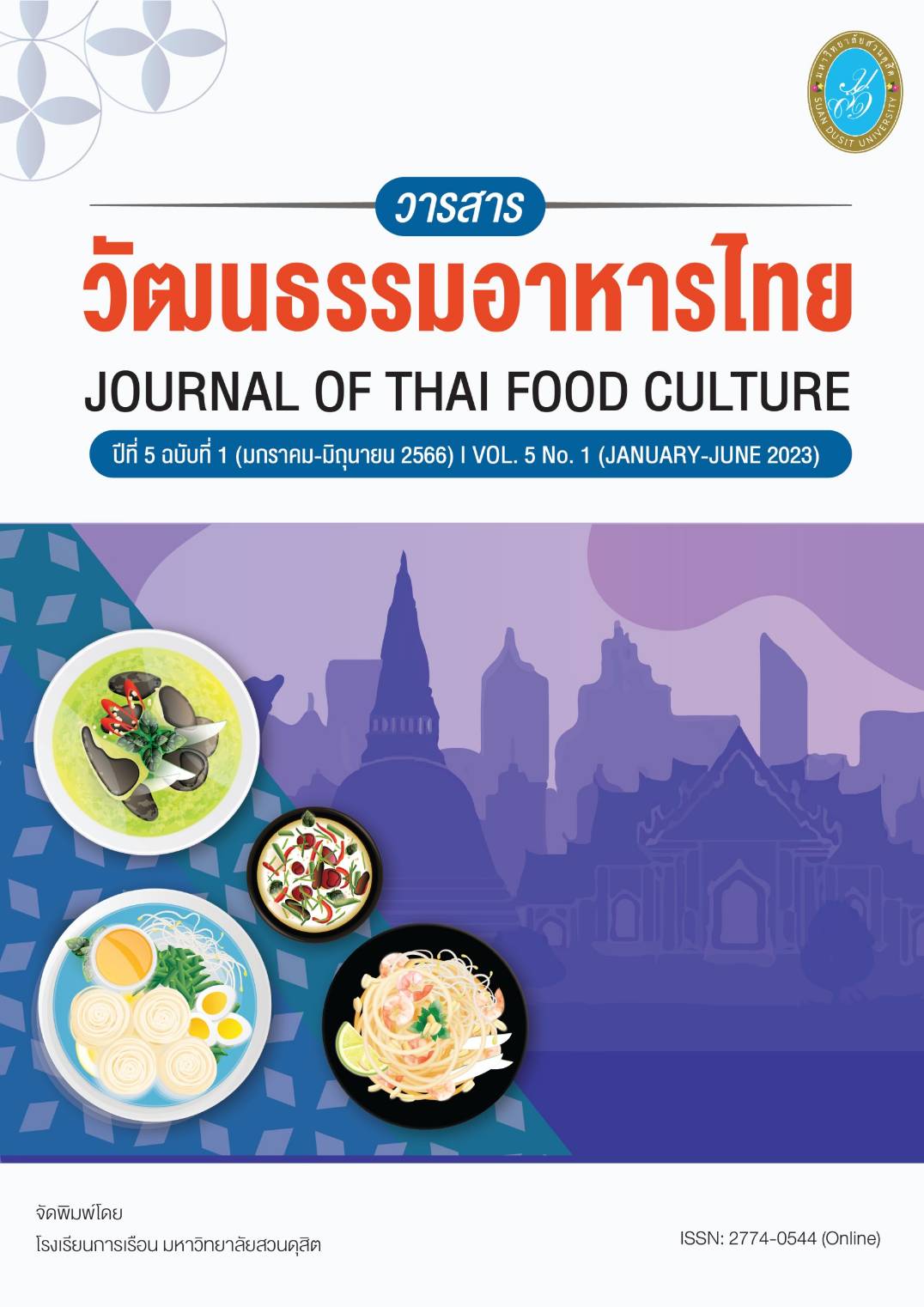ผลของปริมาณข้าวสังข์หยดต่อคุณภาพของผลิตภัณฑ์ธัญพืชอัดแท่ง
บทคัดย่อ
การวิจัยครั้งนี้มีวัตถุประสงค์เพื่อศึกษาปริมาณของข้าวสังข์หยดต่อคุณภาพของผลิตภัณฑ์ธัญพืชอัดแท่ง โดยทำข้าวตอกจากข้าวสังข์หยด ร้อยละ 20, 30 และ 40 ศึกษาคุณภาพทางประสาทสัมผัส และคุณภาพทางกายภาพของผลิตภัณฑ์ธัญพืชอัดแท่ง พบว่าผู้ทดสอบคุณภาพทางประสาทสัมผัสจำนวน 50 คน ให้คะแนนความชอบด้านสีแก่ผลิตภัณฑ์ธัญพืชอัดแท่งจากข้าวสังข์หยดสูตรปริมาณข้าวตอกร้อยละ 20 และ 40 สูงที่สุดอย่างมีนัยสำคัญทางสถิติ (p<0.05) 7.82 ± 0.98, 8.08 ± 0.759 ตามลำดับ และข้าวสังข์หยดสูตรปริมาณข้าวตอกร้อยละ 20 ได้คะแนนความชอบด้านกลิ่น รสชาติ เนื้อสัมผัส และความชอบโดยรวมของสูงที่สุด เท่ากับ 7.92 ± 0.80, 8.00 ± 0.90, 8.04 ± 0.88 และ 8.18 ± 0.83 ตามลำดับ ทั้งนี้ไม่ต่างกันทางสถิติ (p<0.05) ผลิตภัณฑ์ธัญพืชอัดแท่งจากข้าวสังข์หยดเมื่อเพิ่มปริมาณข้าวตอกส่งผลให้ผลิตภัณฑ์ธัญพืชอัดแท่งจากข้าวสังข์หยดมีค่าเนื้อสัมผัส (ความแข็ง) ลดลงโดยปริมาณข้าวตอกร้อยละ 20 มีค่าเนื้อสัมผัสมากที่สุด คือ 4,447.76 ± 90.67 g force ให้ผลสัมพันธ์กับค่าความชื้นเท่ากับ 1.223 ± 0.148 เปอร์เซ็นต์ ซึ่งน้อยกว่าผลิตภัณฑ์ธัญพืชอัดแท่งจากข้าวสังข์หยดปริมาณข้าวตอกร้อยละ 30 และ 40 อย่างไรก็ตามค่า Aw เท่ากับ 0.287 ± 0.048 ไม่ต่างกันทางสถิติ (p<0.05)
ดาวน์โหลด
เผยแพร่แล้ว
รูปแบบการอ้างอิง
ฉบับ
ประเภทบทความ
สัญญาอนุญาต
ลิขสิทธิ์ (c) 2023 โรงเรียนการเรือนสวนดุสิต

อนุญาตภายใต้เงื่อนไข Creative Commons Attribution-NonCommercial-NoDerivatives 4.0 International License.
ลิขสิทธิ์ต้นฉบับที่ได้รับการตีพิมพ์ในวารสารวัฒนธรรมอาหารไทย ถือเป็นกรรมสิทธิ์ของโรงเรียนการเรือน มหาวิทยาลัยสวนดุสิต ห้ามผู้ใดนำข้อความทั้งหมดหรือบางส่วนไปพิมพ์ซ้ำ เว้นแต่จะได้รับอนุญาตอย่างเป็นลายลักษณ์อักษรจากโรงเรียนการเรือน มหาวิทยาลัยสวนดุสิต นอกจากนี้ เนื้อหาที่ปรากฎในบทความเป็นความรับผิดชอบของผู้เขียน ทั้งนี้ไม่รวมความผิดพลาดอันเกิดจากเทคนิคการพิมพ์


